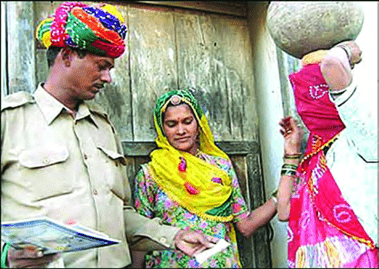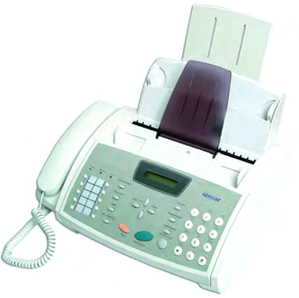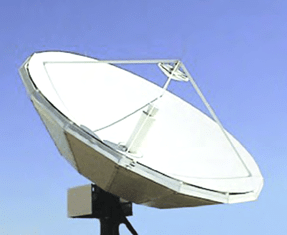Communication Class 4 Notes SST
Communication
To communicate is to exchange or share ideas or information with others. Since long mankind has adopted means to communicate with each other in many interesting ways. Career pigeons were one of them, others were flag signals and fire-smoke signals. Noise created by mouth or drums carried messages. But letters were carried from one person to other too have their history. Use of stamps for the money charged for delivering the mail was the first revolutionary step in communication. Interlinking various places within the country and with other countries had been other major steps. Invention of telegraph and telephone added to communication. These have been supplemented by IT(Information Technology). Postman delivers the mail
Postman delivers the mail
Postal Service
It is the most common way of communication in India, especially in villages. A letter can be posted in one of the letter boxes which is collected by the post office through a postman. Then, through a system in place, it is sent to its destination. However, to make sorting of letters smooth and efficient, postal index numbers (PIN) have been assigned which is a six digit number. India has been divided in specific number of zones from postal point of view. Every zone is given a unique digit then specific parts of that zone are given another unique digit. Further every city or village is given another unique digit. Lastly every city or village has its own localities which have their own digits. Thus by looking at the pin code the postal department knows exactly where a letter is to be sent. In the end the postman will carry the letter at the given address Say for example,110001, tells us that the letter is sent to the Northern zone, Delhi, New Delhi, Connaught Place and nearby areas and then at the address written on the letter. Letters are sorted
Letters are sorted
Postal services are used for sending of money by money order, registered letter, speed post, parcels up to certain weight and dimensions. Post offices have taken up numerous other responsibilities to serve people. Now private parties have stepped into provide mail services. These are called Courier Service.
Telecommunication
Telegraph: Telegraph offices are some times attached to post offices and sometimes work independently. These are the places from where telegraphic messages are exchanged between persons or parties. This mode of communication is being pushed out by telephone, telephonic fax and e-mail.
 FAX can transmit written messages
FAX can transmit written messages
Telephone: It is a personalized way of communication. It can be formal as well as informal. Lately, telephone facilities have reached almost every part of the country except very remote areas. Introduction of cellular phones have improved the situation further more. STD (Subscriber Trunk Dialing) and ISD(International Subscriber Dialing) facilities have further improved communication.
 Telephone provides instant facility for talking to people at a distant place
Telephone provides instant facility for talking to people at a distant place
Telex services made possible to send information in printed form. Use of satellite has brought about remarkable progress in communication.
Mass communication: Radio, television and cinema are the means of mass communication. These are used by the Government as well as by private parties to put their view point and advertisements through these media. Sometimes people make a mistake that these are meant for entertainment only. Satellite disks are used for electronic communications
Satellite disks are used for electronic communications
Print media: Newspapers, periodicals and journals are in this category. The largest number of newspapers and periodicals are printed in Hindi. English comes next to it. Newspapers inform us about happenings in different parts of the country and world
Newspapers inform us about happenings in different parts of the country and world
Things To Remember
- To communicate is to exchange or share ideas or information with others
- Postal service is the most common way of communication in India, especially in villages
- STD is Subscriber Trunk Dialing and ISD is International Subscriber Dialing
- Radio, television cinema and print media are the means of mass communication
|
53 videos|44 docs|59 tests
|
FAQs on Communication Class 4 Notes SST
| 1. What is communication and why is it important in our daily lives? |  |
| 2. What are the key elements of effective communication? |  |
| 3. How does effective communication contribute to the success of an organization? |  |
| 4. What are some common barriers to effective communication and how can they be overcome? |  |
| 5. How can individuals improve their communication skills? |  |

|
Explore Courses for Class 4 exam
|

|

















